Flavorful, gooey rice with tender chicken wrapped in aromatic leaves, Lo Mai Gai is a classic dim sum dish loved by many. Learn to make it at home!
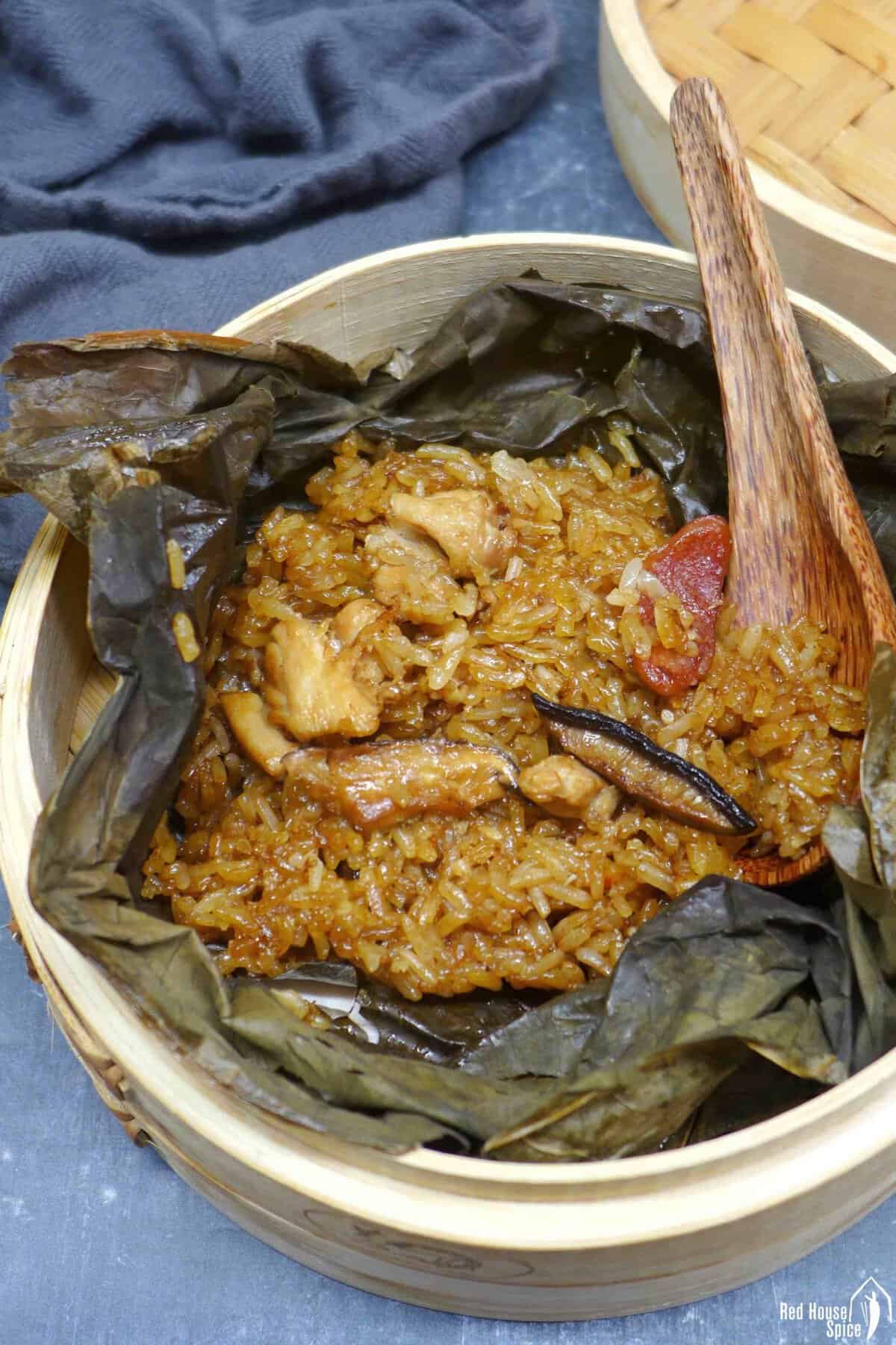
Jump to:
What is Lo Mai Gai
Lo Mai Gai, or Nuò Mǐ Jī/糯米鸡, is known as Sticky Rice Chicken in Lotus Leaves. It’s one of the most ordered dishes in Cantonese dim sum restaurants. Like its counterparts such as Har Gow, Char Siu Bao, Siu Mai, etc, they’re served piping hot in small bamboo baskets and it’s an absolute delight on the palate.
In essence, they are lotus leaf-wrapped parcels stuffed with well-seasoned glutinous rice, chicken, and other umami-rich ingredients. They have a pleasing gooey and tender texture and are packed with wonderful aromas.

In addition to the lotus leaf-wrapped version, Lo Mai Gai can also be prepared in small bowls (or similar vessels) and then flipped onto a plate for serving, a technique similar to that is used for Stir-Fried Sticky Rice, Eight Treasure Rice Pudding. This version is popular in Chinese food venues in Singapore and Malaysia.
🌟 Don’t confuse Lo Mai Gai with Zongzi (Joong, sticky rice dumplings). They share several similarities but also distinct features. For example, Zongzi uses bamboo leaves for wrapping and is often shaped like a 3D triangle. It’s boiled instead of being steamed and has a sweet version that is particularly popular in northern regions of China.
Why this recipe
To develop this recipe, I’ve done several tests of techniques and finally settled down with a simplified version. Here is a summary of what to expect:
- Soak dried ingredients in advance
- Briefly stir-fry, season, and combine everything
- Use lotus leaves to wrap the mixture into parcels
- Steam then enjoy
Ingredients & substitutes
To make Lo Mai Gai, you’ll need the following ingredients:
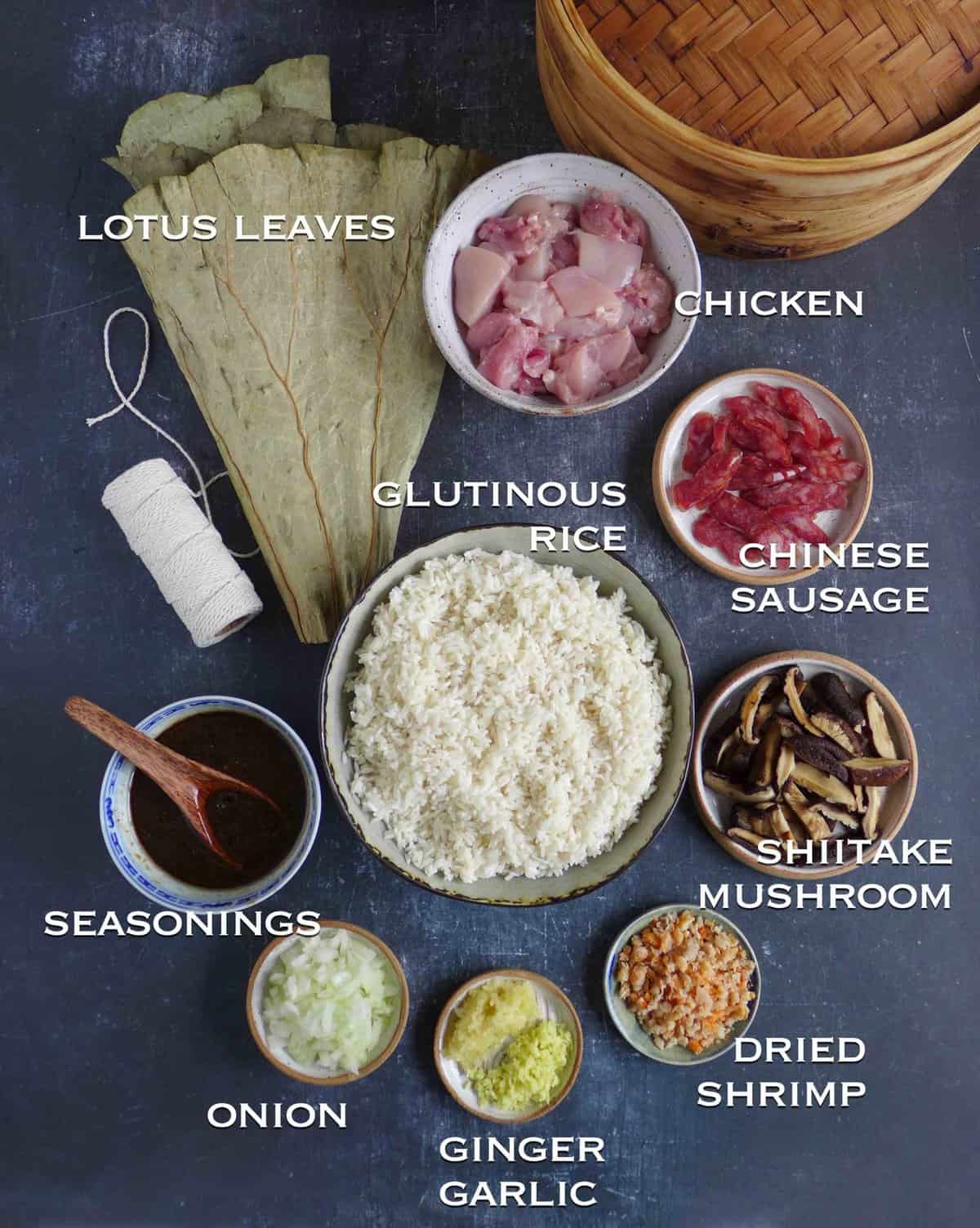
- Glutinous rice, aka sticky rice or sweet rice. Regular rice isn’t suitable for this recipe
- Chicken. Thighs are the best option. You can also use skinless, boneless drumsticks
- Chinese sausage (Lap Cheong/腊肠). It can be replaced by Chinese cured pork belly (Lap Yuk/腊肉), or Chinese BBQ pork(Char Siu/叉烧)
- Dried shiitake mushrooms
- Dried shrimp, or dried scallops
- Aromatics: ginger, garlic, onion (or shallots)
- Seasonings: They included a set of essential Chinese condiments: light soy sauce, dark soy sauce, oyster sauce, Shaoxing rice wine, five-spice pepper (or white pepper), sesame oil, salt, and sugar
🌟 Optional fillings: You can also include these ingredients: salted egg yolks, bamboo shoots, chestnuts, peas, diced carrots, etc.
Lotus leaves & substitutes
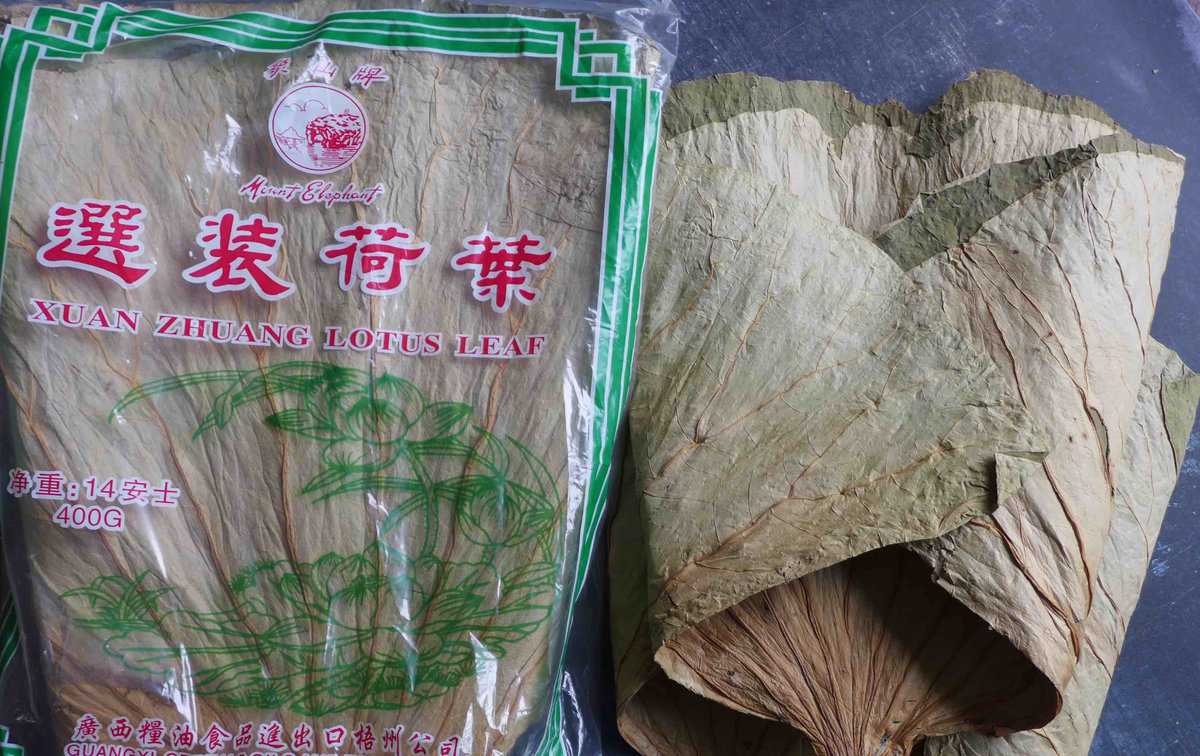
Not only do lotus leaves wrap all the ingredients into a parcel, but they also lend a pleasing aroma to the dish (though they’re not for consumption in case you’re curious). You can find them in dried form in Asian/Chinese stores.
🌟 Having trouble sourcing lotus leaves? Here are three alternatives:

- Use parchment paper as the wrapper
- Steam in small bowls (brushed with a little oil)
- Use banana leaves as a substitute
Prep and cook workflow
Step 1: Soak the dried ingredients
When making Lo Mai Gai, you need to plan in advance and allow some time to rehydrate the dried ingredients before cooking starts.
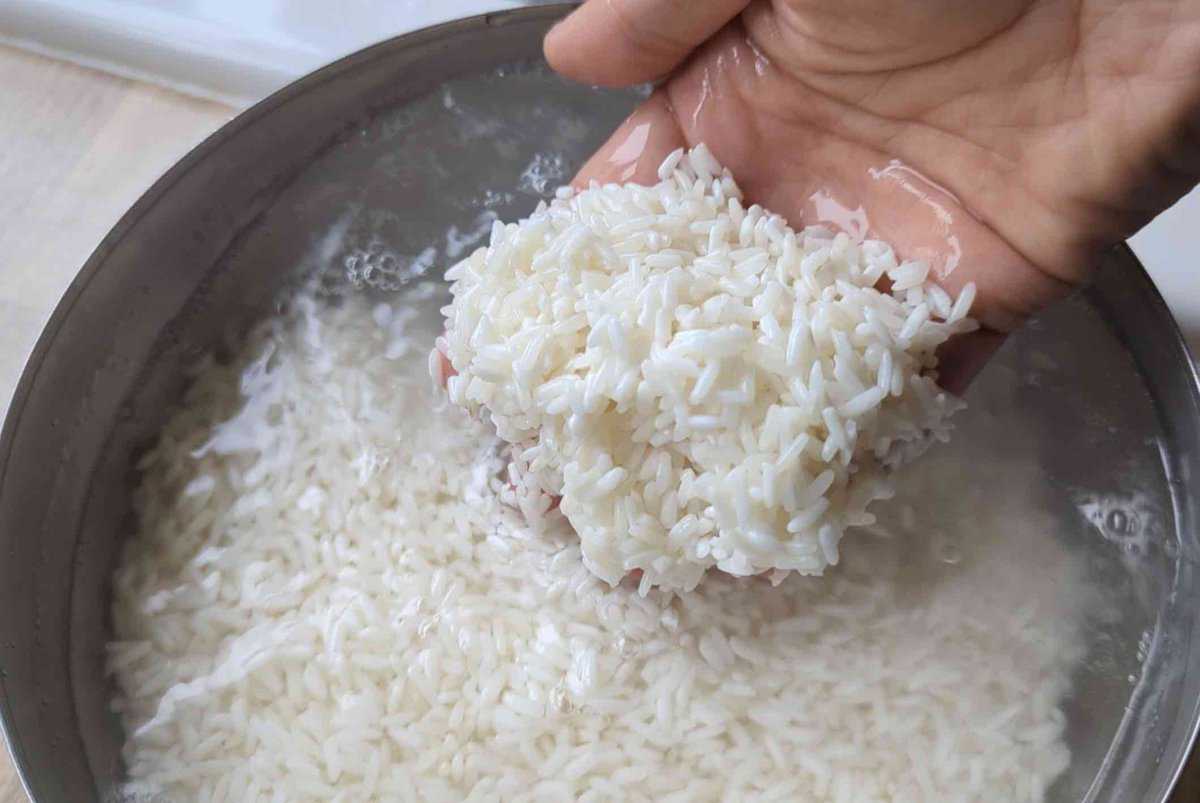
Glutinous rice needs to be soaked overnight or for at least 6 hours. The grains will absorb lots of water so that the final dish won’t taste dry.
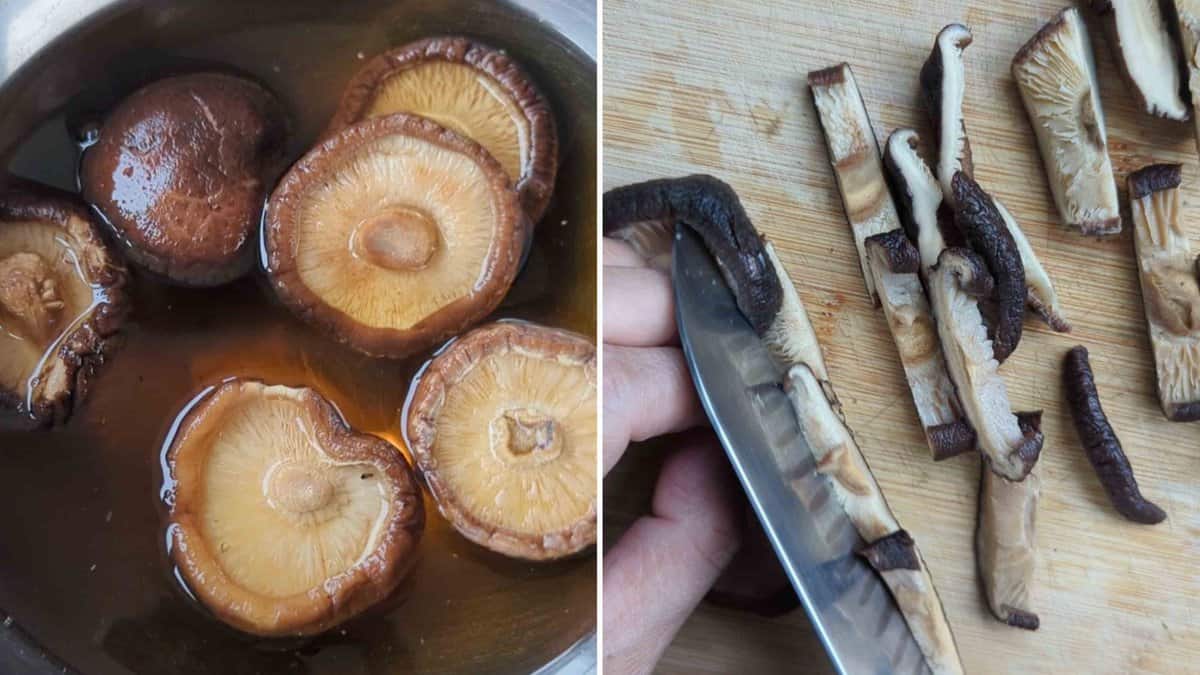
Dried shiitake mushrooms provide a wonderful umami taste and aroma. As I explained in my Shiitake Mushroom Guide, soaking them in cold water overnight (or 6 hours) leads to the best result. Slice them after rehydration and keep the flavorful soaking water for later use.
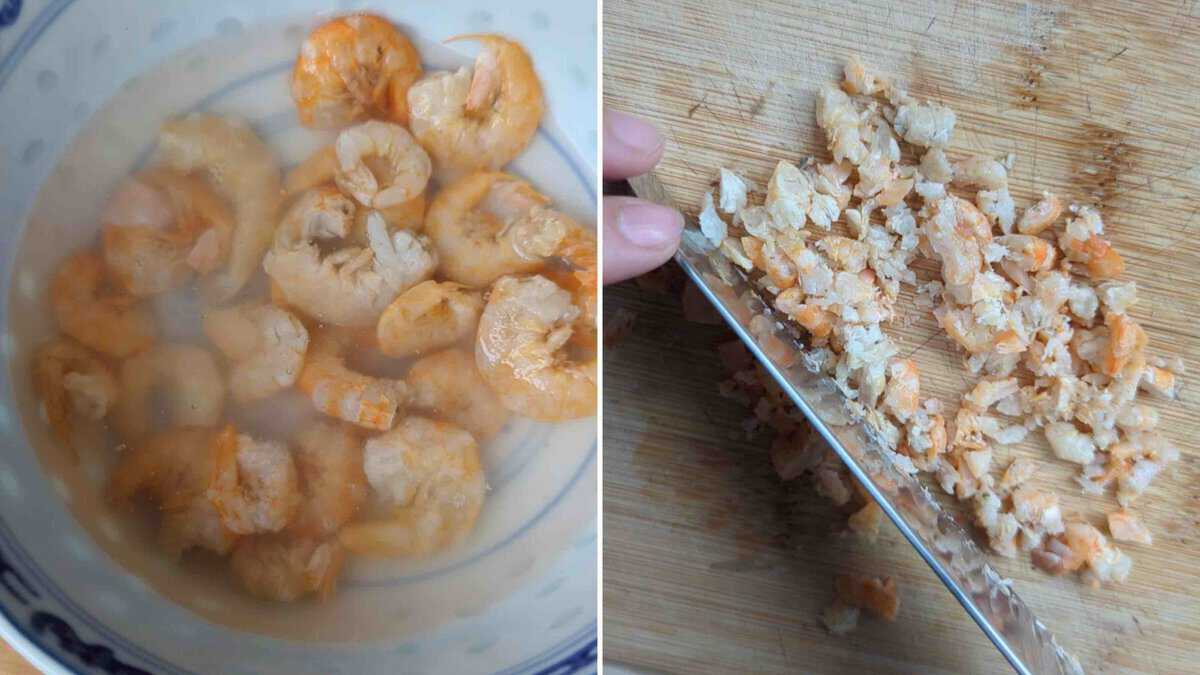
Dried shrimp doesn’t require lengthy soaking. 10 minutes in hot water will do the trick. Drain then chop them finely. Keep the soaking liquid.
Step 2: Prepare the leaves
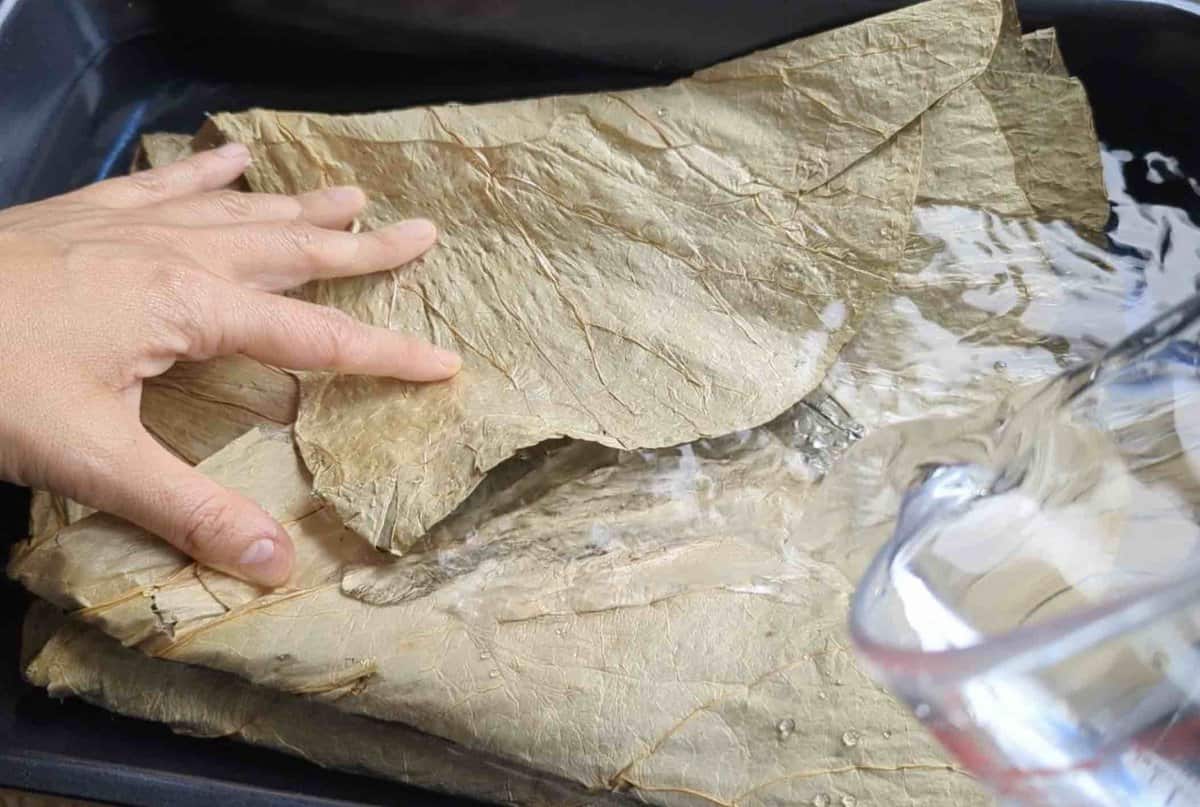
Dried lotus leaves need to be soaked so that they become pliable. Submerge them in plenty of water for 1 hour. This works well in a large roasting pan or in a sink with a heavy item on top to keep them down at all times.
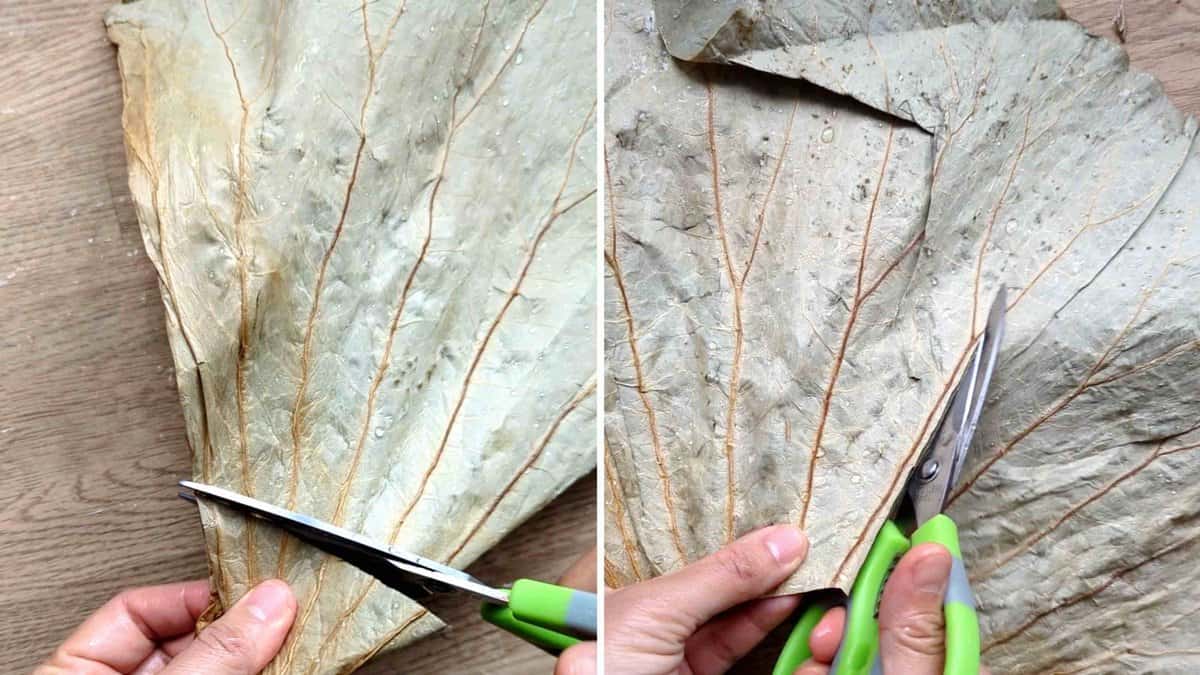
Afterward, trim off the hard stem part. Then divide the large, round leaf into four quarters. Each will be used to make one parcel of Lo Mai Gai.
Step 3: Prepare the meat & sauce
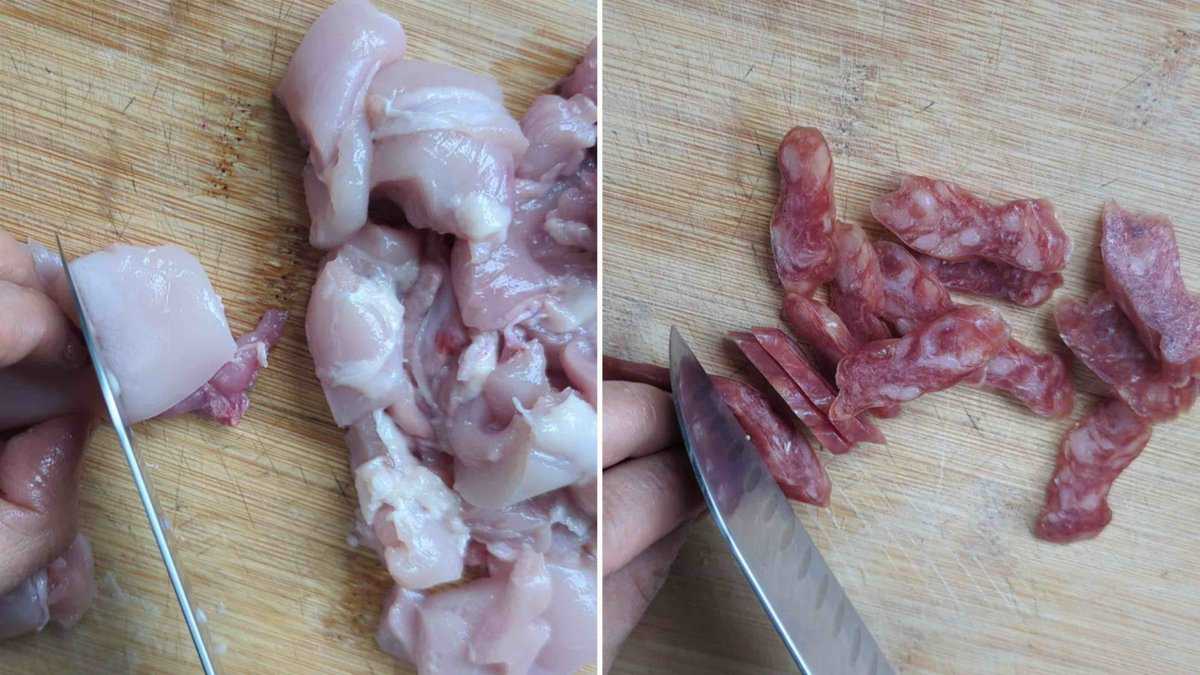
Cut the chicken into bite-sized chunks and slice the sausage diagonally.
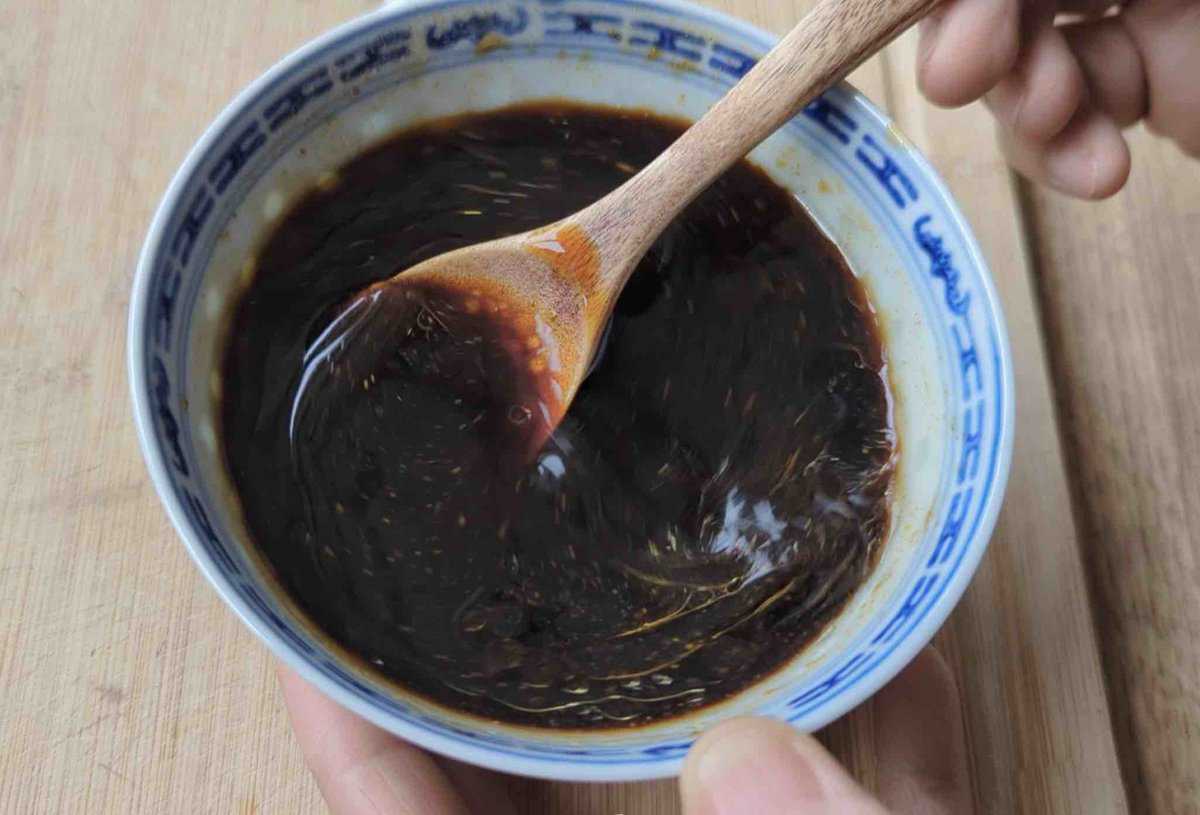
In a bowl, mix all the seasonings listed above with some of the water that’s used to soak the mushrooms and shrimp.
Step 4: Stir-fry the filling
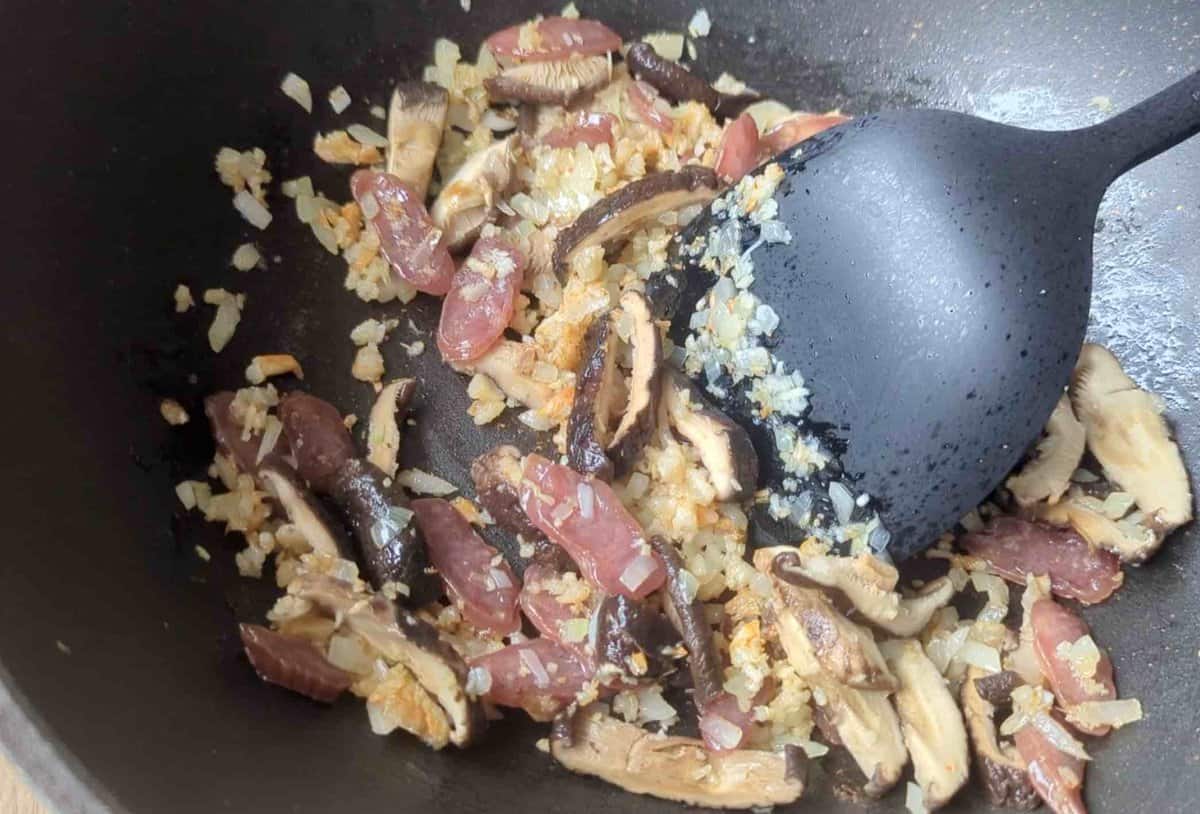
Start by sizzling minced ginger, garlic, and finely chopped onion in a little oil to release their aroma. Then add dried shrimp and Chinese sausage. When part of its fat is rendered, put in sliced shiitake and fry for a short while. Then dish out everything in the wok/pan.
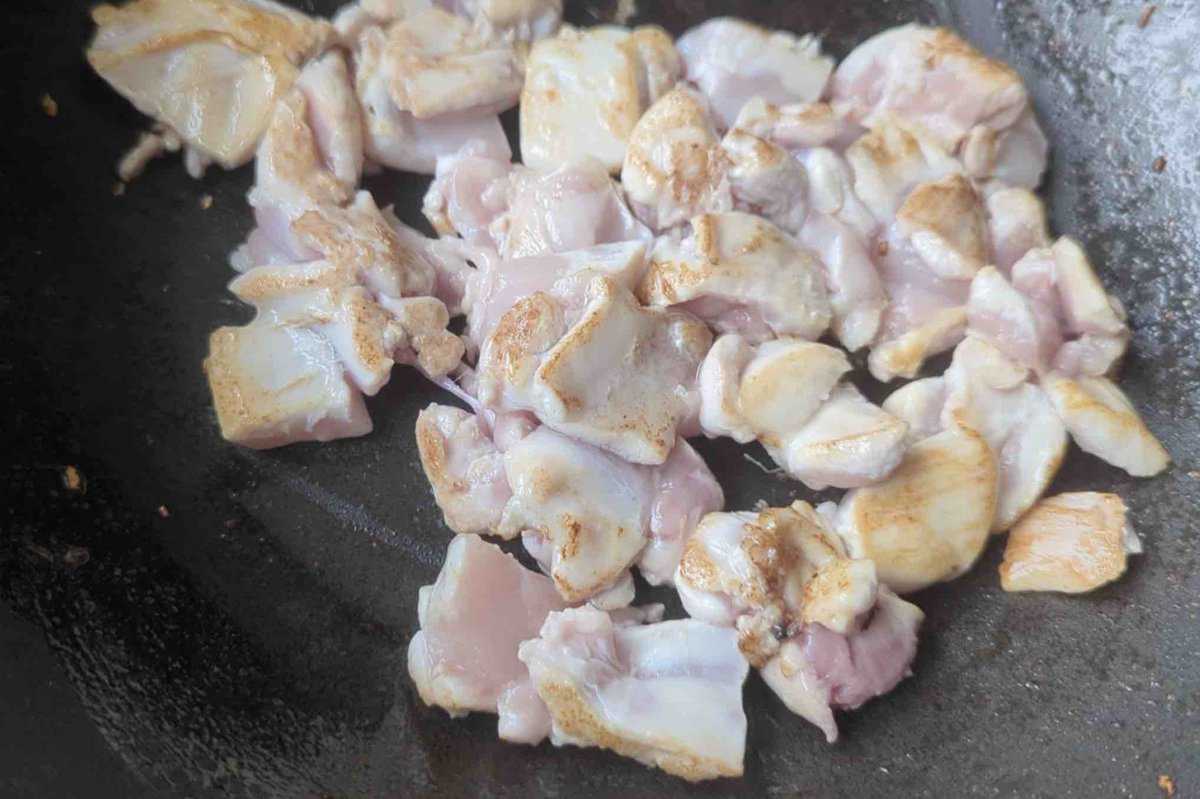
Keep the heat medium-high and add the chicken to the vacant cookware. Quickly sear them until the surface browns lightly.
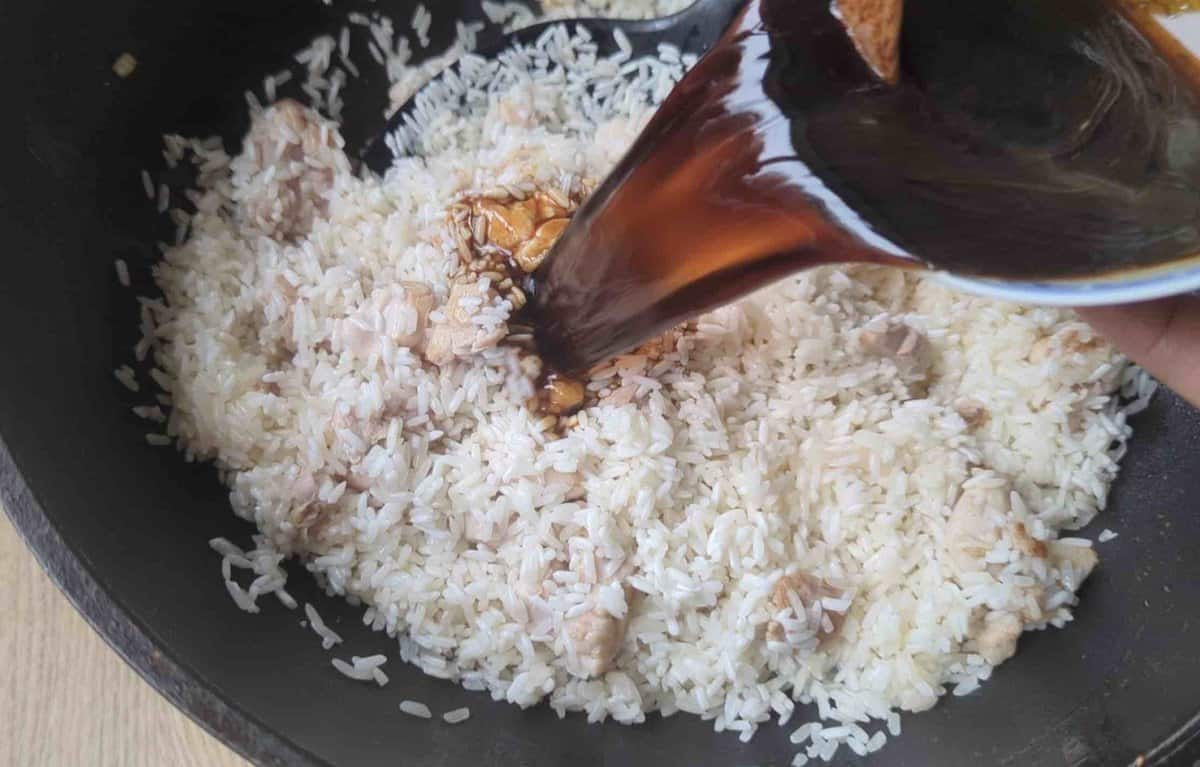
Add the drained rice and pour the sauce mixture over. Mix well then toss constantly until the rice has absorbed the liquid and become viscous.

Stir in the fried sausage, mushrooms and aromatics. Remove from the heat and let the mixture sit until cool to touch.
Step 5: Assemble the parcels
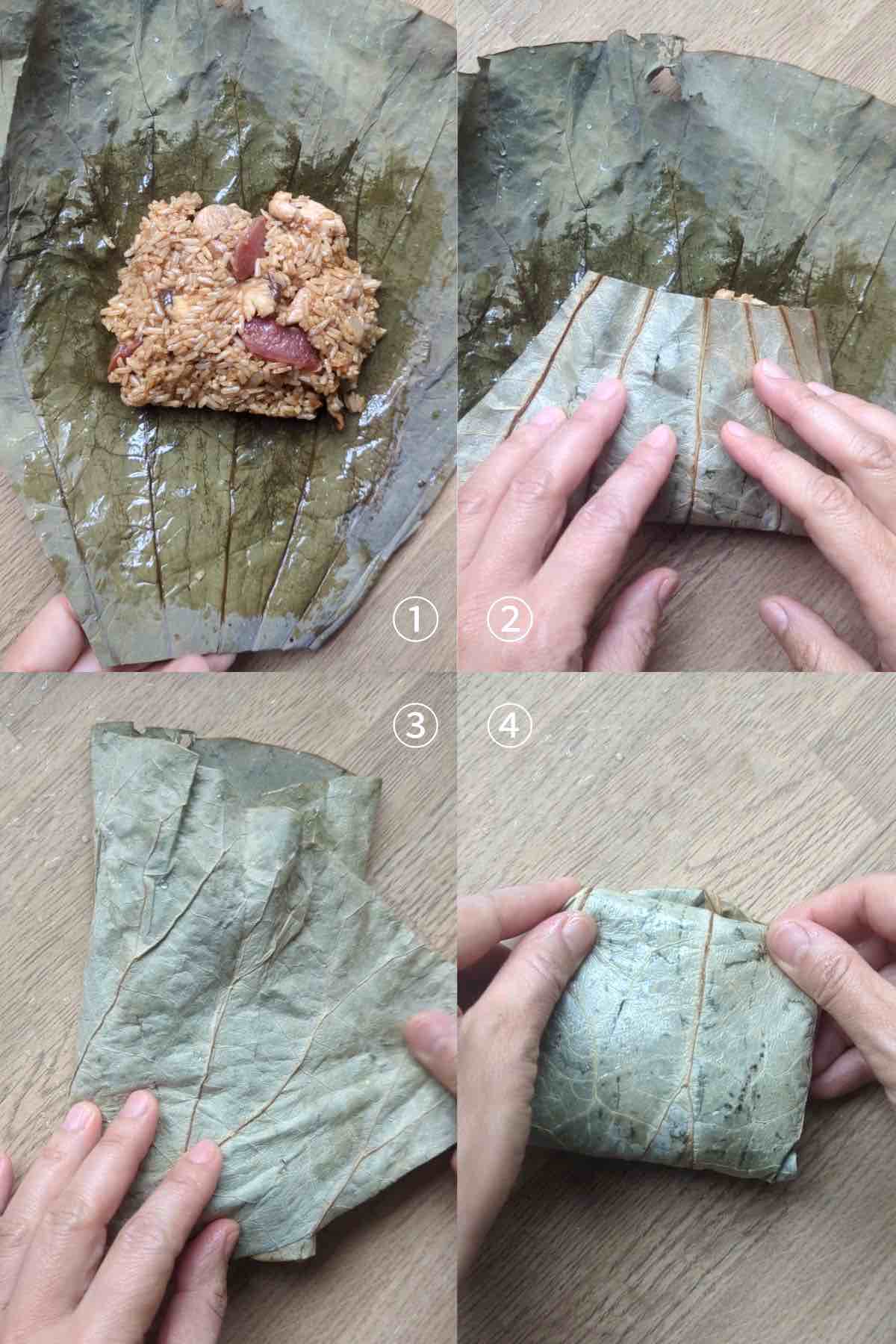
Lay a piece of cut lotus leaf with the smooth side facing up. Brush a thin layer of oil over the area which will be in contact with the filling to prevent sticking.
Scoop out a portion of the rice mixture and place it over the leaf. Wrap it in four directions to form a square/rectangle parcel. Use kitchen twine to secure it if you wish. Otherwise, lay the parcel with the open part facing down without tying it up.
Step 6: Steam the parcels
You can use either a steamer or an Instant Pot to cook Lo Mai Gai. Here are the methods:
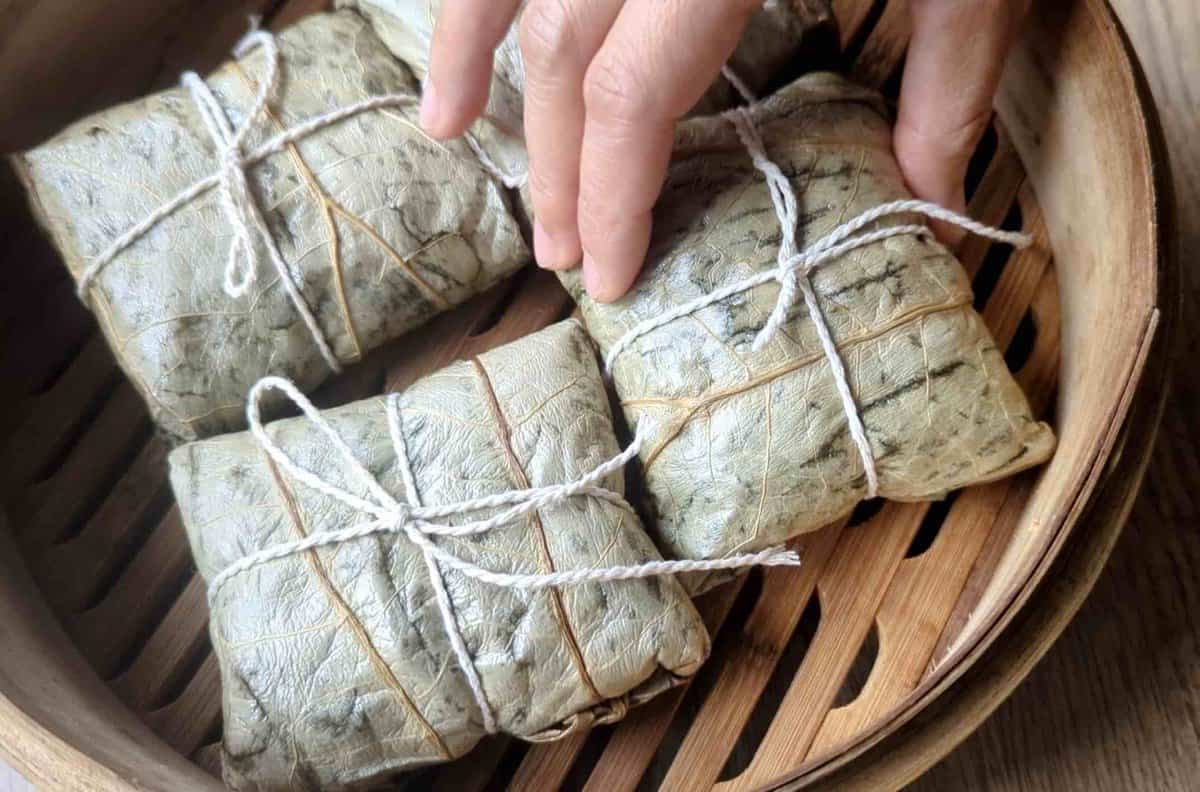
Option 1: Use a steamer: Fill the wok/pot with plenty of water. Place the steamer baskets over. Put the assembled parcels inside the baskets. Bring the water to a full boil then leave to steam over medium-low heat for about 1 hour and 15 minutes. Make sure you check the water level a couple of times and top up when necessary. This is to prevent the water from evaporating completely.
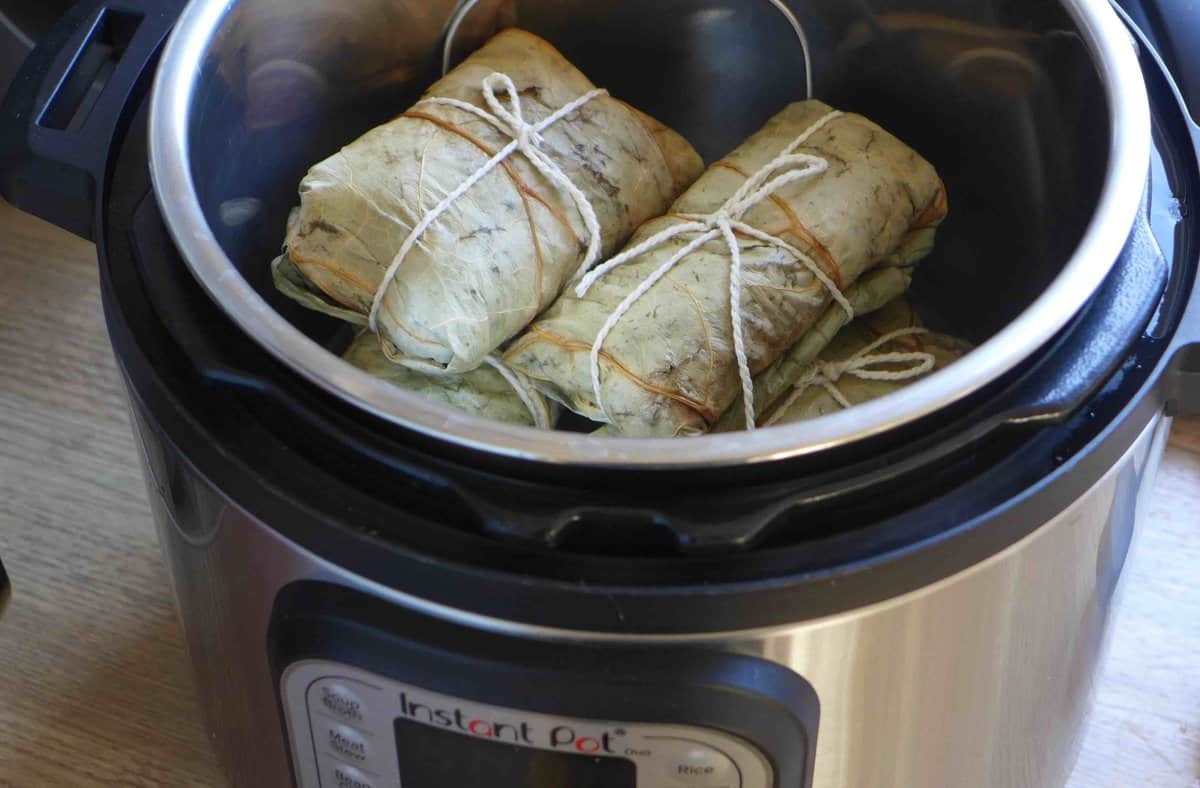
Option 2: Use an Instant Pot: Add 1½ cups (350ml) of water to the inner pot. Put in the steamer rack then the assembled parcels on top (It’s fine to stack them up). Set to steam for 40 minutes then perform a natural release of the pressure.
How to store & reheat
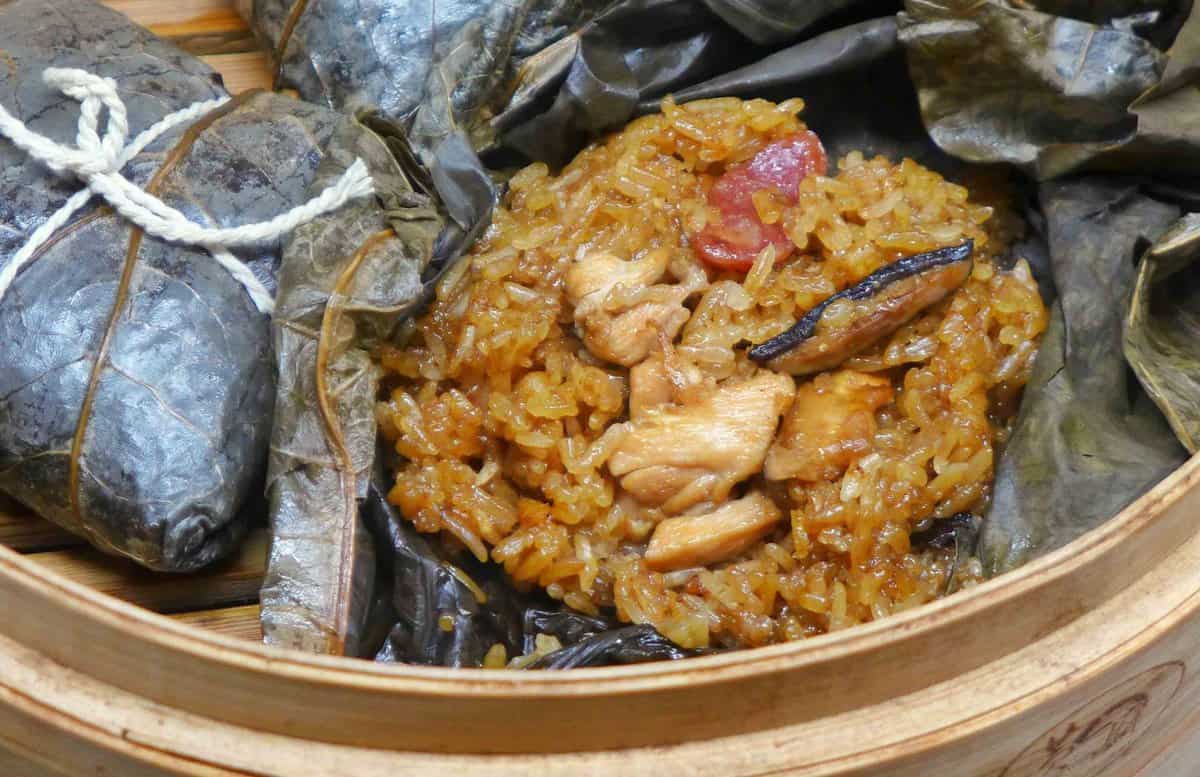
Lo Mai Gai is a great dish to make in big batches and enjoy whenever you feel like it. You can refrigerate any leftovers for 3 days. They can also be frozen for up to 3 months (packed in airtight bags).
Before serving, simply defrost the parcels in the fridge then steam for 10 minutes or so until they become piping hot.
Other dim sim recipes
Looking for other classic dim sum dishes to try? Check out these popular recipes:
📋 Recipe
Love this recipe? Please leave a 5-star 🌟🌟🌟🌟🌟 rating in the recipe card below & if you REALLY like it, consider leaving a comment as well!

Lo Mai Gai (Dim Sum Sticky Rice Chicken)
BEFORE YOU START
EQUIPMENT
- A steamer, or an Instant Pot
- Kitchen twine (optional)
Ingredients
Dried ingredients
- 2 cups glutinous rice - aka sticky rice, sweet rice
- 6 dried shiitake mushrooms
- 2 tablespoon dried shrimp - or dried scallops
- 2 lotus leaves - see note 1 for substitutes
Meat
- 2 piece boneless, skinless chicken thighs
- 1 link Chinese sausage - see note 2 for substitutes
Seasonings
- 1 tablespoon light soy sauce
- 1½ tablespoon dark soy sauce
- 1 tablespoon oyster sauce
- ½ tablespoon Shaoxing rice wine
- 1 teaspoon sugar
- ⅛ teaspoon salt
- ⅛ teaspoon five spice powder - or white pepper
- 1 teaspoon sesame oil
You also need:
- 1 tablespoon neutral cooking oil - plus more for brushing
- ½ onion - finely chopped
- 1 tablespoon minced ginger
- 1 tablespoon minced garlic
Instructions
Prepare dried ingredients
- Rinse glutinous rice under running water. Then soak it in plenty of water overnight, or for at least 6 hours.
- Rehydrate dried shiitake mushrooms in water overnight or for at least 6 hours. Drain then trim off the stems and cut them into slices (keep the soaking water for later use).
- Add two tablespoons of hot water to the dried shrimp. Leave to soak for 10 minutes. Drain then chop into finer pieces (keep the soaking water for later use).
- Soak lotus leaves in water. Put something heavy over them so that they stay fully submerged. Let sit for 1 hour until they become pliable. Trim off the hard stem ends. Divide each leaf into 4 equal pieces.
Cut the meat
- Cut chicken thighs into bite-sized pieces. Cut Chinese sausage diagonally into thin slices.
Mix the seasonings
- In a small bowl, mix all the seasonings (light soy sauce, dark soy sauce, oyster sauce, Shaoxing rice wine, sugar, salt, five-spice, and sesame oil).
- Stir in the shrimp soaking water, and about ⅓ cup (80 ml) of the mushroom soaking water. Set aside.
Stir-fry the fillings
- Heat 1 tablespoon of cooking oil to a wok or large skillet. Sizzle chopped onion, minced ginger, and garlic over medium-high heat until fragrant.
- Add dried shrimp and Chinese sausage. Fry until the fatty part of the sausage turns translucent. Then put in shiitake mushrooms and fry for a further 30 seconds or so. Dish out everything for later use.
- Put the chicken into the same wok, arranged in a single layer, and sear it until most part of it loses its pink color (still uncooked inside).
- Add drained glutinous rice, along with the seasoning mixture. Toss and stir so that the chicken and rice are well coated with the sauce. Fry until the rice becomes viscous.
- Finally, stir in the fried sausage, mushroom, and aromatics. Mix to combine. Let sit until it’s cool enough to the touch.
Assemble the parcels
- Lay a piece of lotus leaf with the smooth side facing up. Brush a thin layer of oil over the area where you’ll place the filling. Put ⅛ of the rice mixture on the leaf. Wrap it into a parcel with the leaf. Use a piece of kitchen twine to tie it up (this step is optional). Repeat to finish the rest.
Steam the dish
- If using a steamer: Put all the parcels into a steamer. Bring the water to a full boil then leave to steam over medium-low heat for 1 hour and 15 minutes. Remember to check the water level 1-2 times to avoid drying out.
- If using an Instant Pot: Add 1½ cups (350ml) of water to the pot fitted with a steaming rack. Place the parcels over the rack (it’s fine to stack them up). Set the steam function for 40 minutes. Allow it to release the pressure naturally.
Store & reheat
- Leftovers can be kept in the fridge for up to 3 days. Alternatively, freeze them in airtight bags for up to 3 months.
- To reheat, defrost in the fridge if frozen. Steam for 10 minutes until piping hot.
Video
NOTES
NUTRITION
NUTRITION DISCLOSURE: Nutritional information on this website is provided as a courtesy to readers. It should be considered estimates. Please use your own brand nutritional values or your preferred nutrition calculator to double check against our estimates.


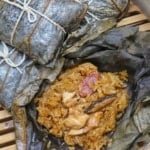

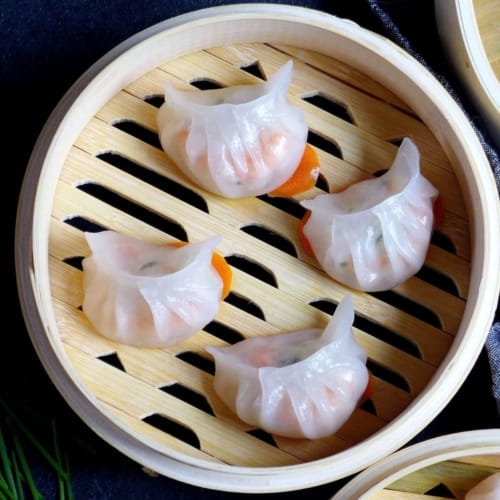
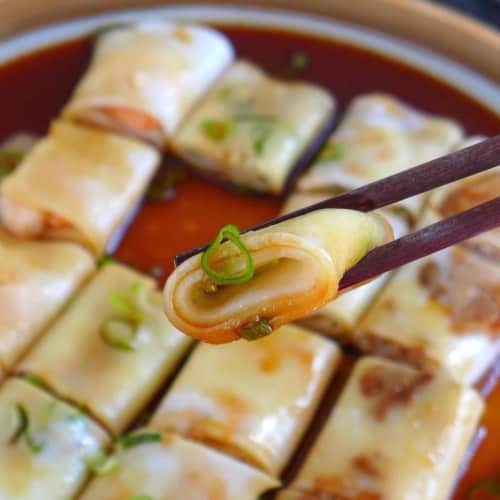
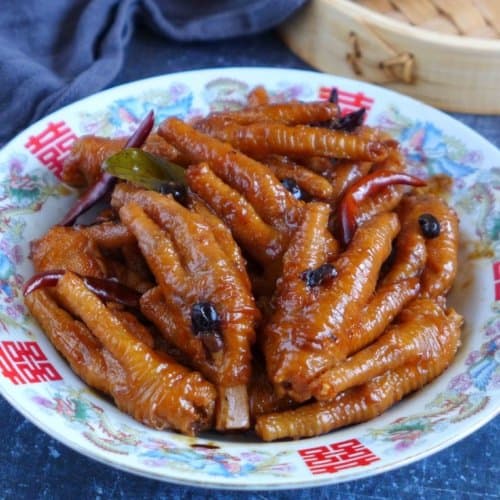
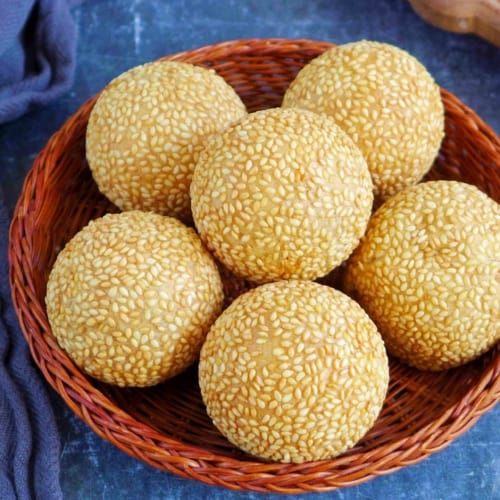

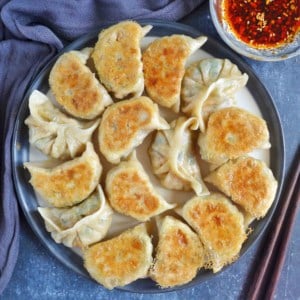

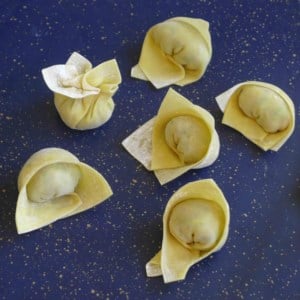
Can you please clarify if cup to measure rice is chinese rice cup or western measuring cup? Thanks
In my recipes, cups always refer to standard US measuring cups.Happy cooking!
I had this dish at a local dum sum place one weekend and it was good. I figured I would try to make this myself. I’ve already done a Vietnamese version of salty sticky rice but I was pining for the Chinese version. Followed the recipe as close as I could. Started soaking the glutinous rice and mushrooms in the morning and waited until afternoon to start prepping the rest of the ingredients. Didn’t have any lotus leaves on hand but was readily accessible at a local supermarket. The wrapping could’ve looked nicer but what the heck, it had a rustic look to it. Came out really good. Seasoning was spot on. It was still steaming when I unwrapped it. Really enjoyed it! Thank you, Wei.
That’s wonderful to hear!